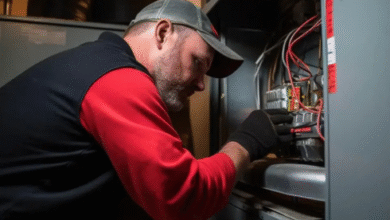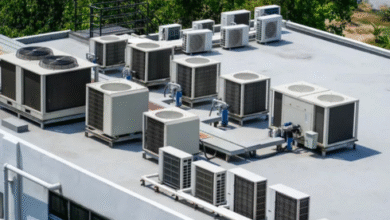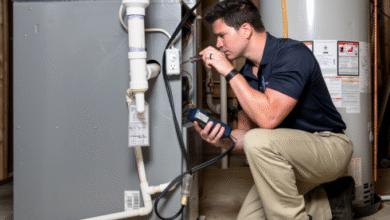If you’ve ever turned on the tap and caught a faint metallic smell—or worse, noticed rust-colored stains creeping across your white sink—you know just how frustrating iron in water can be. It’s one of those invisible issues that becomes painfully obvious over time. It ruins fixtures, clogs appliances, and leaves your clothes looking like they’ve been through a dirt storm. And don’t get us started on the taste.
But here’s the good news: you don’t have to just “live with it.”
Whether you’re dealing with a well system in a rural home or just tired of fighting off rusty rings in your urban bathroom, iron removal systems, water system maintenance, whole house water filters can work together like an all-star team—keeping your water clean, your plumbing healthy, and your peace of mind intact.
Let’s unpack what that looks like in real life.
The Not-So-Silent Invader: Iron in Your Water
First off, iron isn’t necessarily dangerous. But it sure is annoying.
It can make your water taste metallic, your laundry look blotchy, and your pipes—well, not happy. Over time, iron deposits build up and lead to clogs or corrosion in everything from your faucets to your water heater. Some people even experience skin irritation or dryness, especially if the iron content is high.
There are two main types you’ll hear about: ferrous (dissolved, invisible) and ferric (oxidized, the kind you can see). Both are a pain, and both need to be removed effectively.
This is where an iron removal system comes into play—and trust me, if you’re battling orange streaks in your toilet, it’s going to feel like a miracle once it kicks in.
Iron Removal Systems: Your First Line of Defense
There’s no one-size-fits-all solution, but most iron removal systems rely on some combo of filtration, oxidation, and ion exchange. Some of the most common options include:
- Oxidizing filters (like manganese greensand or birm media) that convert dissolved iron into a solid so it can be filtered out.
- Air injection systems that pre-oxidize the water, making filtration more effective.
- Water softeners, which can remove some types of iron (though they’re not always the best solution if iron is your main issue).
The best system for your home depends on how much iron is present, what type it is, and whether you’re also dealing with other contaminants like sulfur or manganese.
Point being: test your water first. A proper water analysis will tell you what you’re up against—and make sure you’re not throwing money at the wrong solution.
Whole House Water Filters: The Bigger Picture
Now let’s zoom out.
Iron might be your biggest frustration, but chances are, it’s not the only thing in your water that needs addressing. Chlorine, sediment, bacteria, and other common impurities can sneak in—especially if you rely on well water or live in areas with aging infrastructure.
That’s where whole house water filters earn their stripes.
These systems are installed where the water enters your home, meaning every faucet, showerhead, and appliance benefits. No more installing little filters on every sink. Just clean, treated water flowing consistently throughout your home.
They’re especially handy if you’ve got kids or family members with sensitive skin. And yeah, your hair and laundry will probably thank you too.
Don’t Set It and Forget It: Water System Maintenance Matters
You could buy the best system on the market—but if you neglect it, problems will creep right back in.
Like any hard-working system, your water filtration setup needs regular maintenance to keep things running smoothly. This means:
- Replacing filters as recommended
- Flushing tanks and lines (especially for systems handling heavy iron loads)
- Checking and cleaning media beds
- Monitoring flow rates and pressure
Some systems come with smart sensors or app-based tracking tools. Others? They need a little more hands-on care. Either way, don’t ignore it. Skipping maintenance can lead to blockages, foul smells, or even bacteria buildup—undoing all the benefits you paid for in the first place.
And remember, water chemistry can change over time. Even if your system was perfect a year ago, it might need adjustments if your source water shifts due to weather, construction, or infrastructure issues in your area.
Choosing the Right Setup for Your Home
So where do you begin?
Start with that water test. Seriously—it’s the most important step. Once you know what’s actually in your water, you can match your needs to the right solution.
Here’s a quick decision flow:
- High iron content? Look at dedicated iron filters or oxidation systems.
- Want general water improvement across the board? Consider a multi-stage whole house filter.
- Dealing with hardness and iron? A softener and filter combo might be ideal.
- Want to future-proof your system? Choose something with modular expandability.
Also, don’t shy away from getting help. A professional water treatment specialist can save you from costly mistakes and help customize a system that’s right for your water, your budget, and your goals.
Final Sip: Clean Water, Clean Conscience
At the end of the day, clean water isn’t a luxury—it’s a basic need. And you shouldn’t have to settle for rusty stains, strange tastes, or questionable quality just because that’s what’s flowing from the tap.
Whether it’s the orange tinge of iron, the grit of sediment, or the mystery of what’s really in your well, there’s a fix—and it starts with being proactive.
Iron removal systems, water system maintenance, whole house water filters—they might not be glamorous, but they sure as heck make life better. Because once you experience truly clean, clear water from every tap in your house, there’s no going back.





